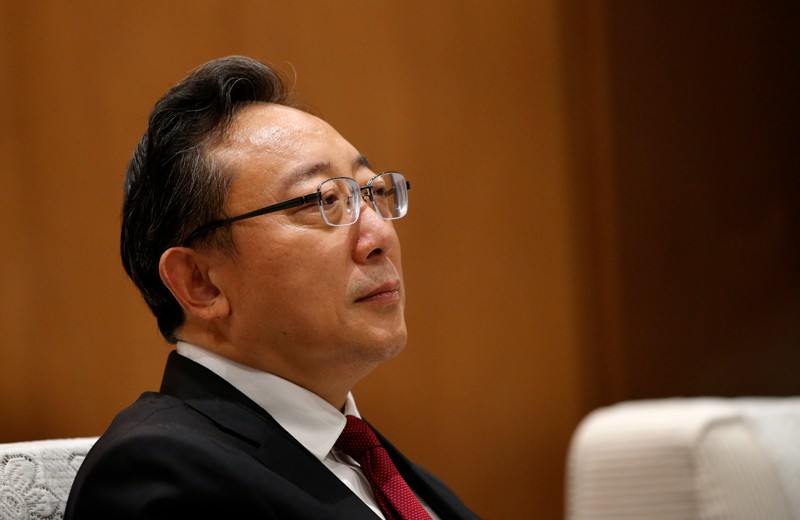A distinguished Chinese immunologist, Cao Xuetao, has been cleared of significant wrong-doing more than a year after the government launched an investigation to review 63 manuscripts co-authored by Cao containing suspected problematic images. The investigating committee found that none of the papers contained plagiarized or fabricated data, but that some had images had been “misused”, which “reflected a lack of rigorous laboratory management”. Cao must now correct those papers and has been barred from applying for grants or recruiting students for a year.
Research leaders in China have been cracking down on problematic research for several years, following ongoing issues with plagiarism and research misconduct. Cao, now the president of Nankai University in Tianjin, China and a prominent voice for strengthening research integrity in the country, is among the most high-profile scientists to be investigated. The papers in question were published before he became university president.
The investigating committee, comprising representatives from the ministries of science and education, and several other government agencies, published a summary of its conclusions online on 21 January. However, it gave few details about the investigation, including how many of Cao’s papers contained misused images. Several scientists contacted by Nature criticized this lack of transparency; others disagreed with the committee’s findings.
“It is astonishing that [the committee] concluded that no fraud had been committed in any of these cases,” says Elisabeth Bik, a microbiologist based in Sunnyvale, California, who first raised issues about Cao’s papers in November 2019, which triggered the investigation. Bik devotes her time to spotting problematic images in scientific papers.
Bik says that in some of Cao’s papers, the same images have been used to represent different experiments, which could have been accidental. “That is sloppy, but does not necessarily mean it was done intentionally,” she says. But other papers contain images with unnaturally repetitive elements. “I cannot think of any technical reason or failure to correctly label images that could explain those repeats,” she says. “The images appear to be altered.”
Huang Futao, who studies higher education at Hiroshima University in Japan, says Cao should now explain why there are so many problematic images in his papers, and what measures he will take to prevent similar problems in the future.
Grueling investigation
Table of Contents
Cao says the investigation was grueling. He and his colleagues handed over 1500 pages of material some stretching back more than 15 years, repeated experiments, and submitted new data. Cao says he was corresponding author on 54 of the papers investigated and that 35 contained unintentional errors resulting in image misuse. He blames the lack of “unified definitions and journal policies regarding image processing” ten to fifteen years ago when the problematic papers were published. “What are classified as ‘errors’ today might not be considered errors back then but instead, acceptable practices,” he says. Cao did not respond to Bik’s suggestion that some images looked intentionally altered.
In November 2019, Bik raised concerns on the academic discussion forum PubPeer about problematic images in dozens of papers written by Cao and his group. Several other people, mostly anonymous, raised similar issues in other papers from the group. At the time, Cao said his lab would investigate the issues raised and was confident they did not alter the paper’s conclusions. Some of Cao’s co-authors replied on PubPeer that some mistakes were honest errors, such as images being mislabeled.
As a result of the investigation, the committee ordered Cao to respond to the concerns in the papers in question and carry out corrections. Based on a Nature analysis, 19 have been corrected and 3 have been withdrawn since Bik first flagged the papers. Cao is also prevented from applying for national science and technology projects, and from acting as a scientific expert in any activities using government funds.
Cao says he will improve data archiving and image processing procedures in his laboratory. “We’re confident that with more stringent and updated data management and education, we’ll continue to make positive contributions to the advancement of human health and disease research,” he says.
Bik says that the most important upshot of the investigation is the committee’s instruction to Cao is to retract or correct the papers in question — but she is concerned that more papers have still not been retracted.
Sun Ping, a former research-integrity officer at China’s science ministry who now consults on research integrity at Siyidi International Education Consulting and Service in Beijing, would like the committee to make details of its investigation public. “If the investigation report can be made public, the interested readers will make their own judgements,” says Sun.
Others investigated
The committee also released its findings on several other researchers’ papers that had been flagged for problematic images. They found no evidence of fraud in papers by Li Hongliang, a cardiovascular researcher and dean of the School of Basic Medical Sciences at Wuhan University in China, but did identify misuse of images that “reflected the lack of rigorous processing of experimental data”. Li will face the same penalties as Cao, but they will last for two years.
The committee also found no evidence of fraud in papers by Geng Meiyu, a pharmacologist at the Shanghai Institute of Materia Medica, China, who gained fame with a controversial and contested finding that suggested a seaweed extract can slow decline in people with Alzheimer’s disease, but reprimanded her for incorrect use of images in papers. Nor did they find evidence of fraud in papers by Pei Gang, a molecular biologist at the Shanghai Institute of Biochemistry and Cell Biology, China, and by Rao Yi, a neuroscientist at Capital Medical University in Beijing.
Li, Geng and Rao did not respond to requests for comment on the committee’s findings. Pei says the investigation into his papers was a waste of resources. “I still want to know what the evidence was that started this,” he says.

